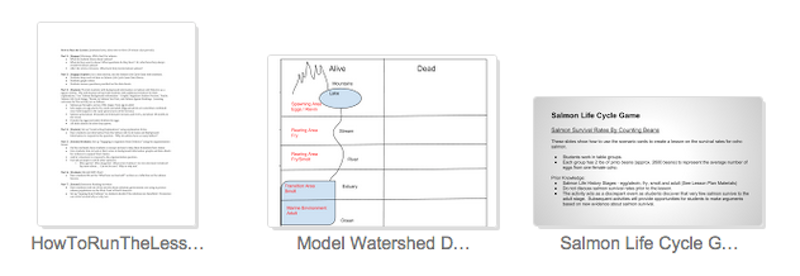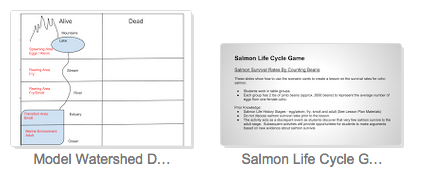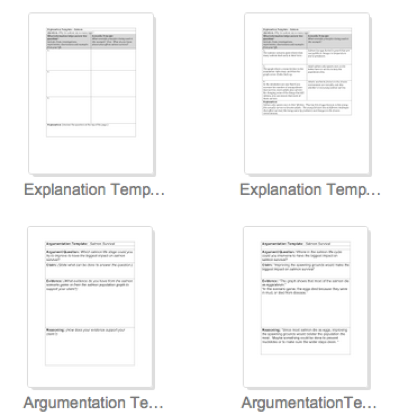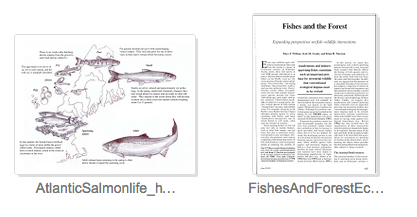Game
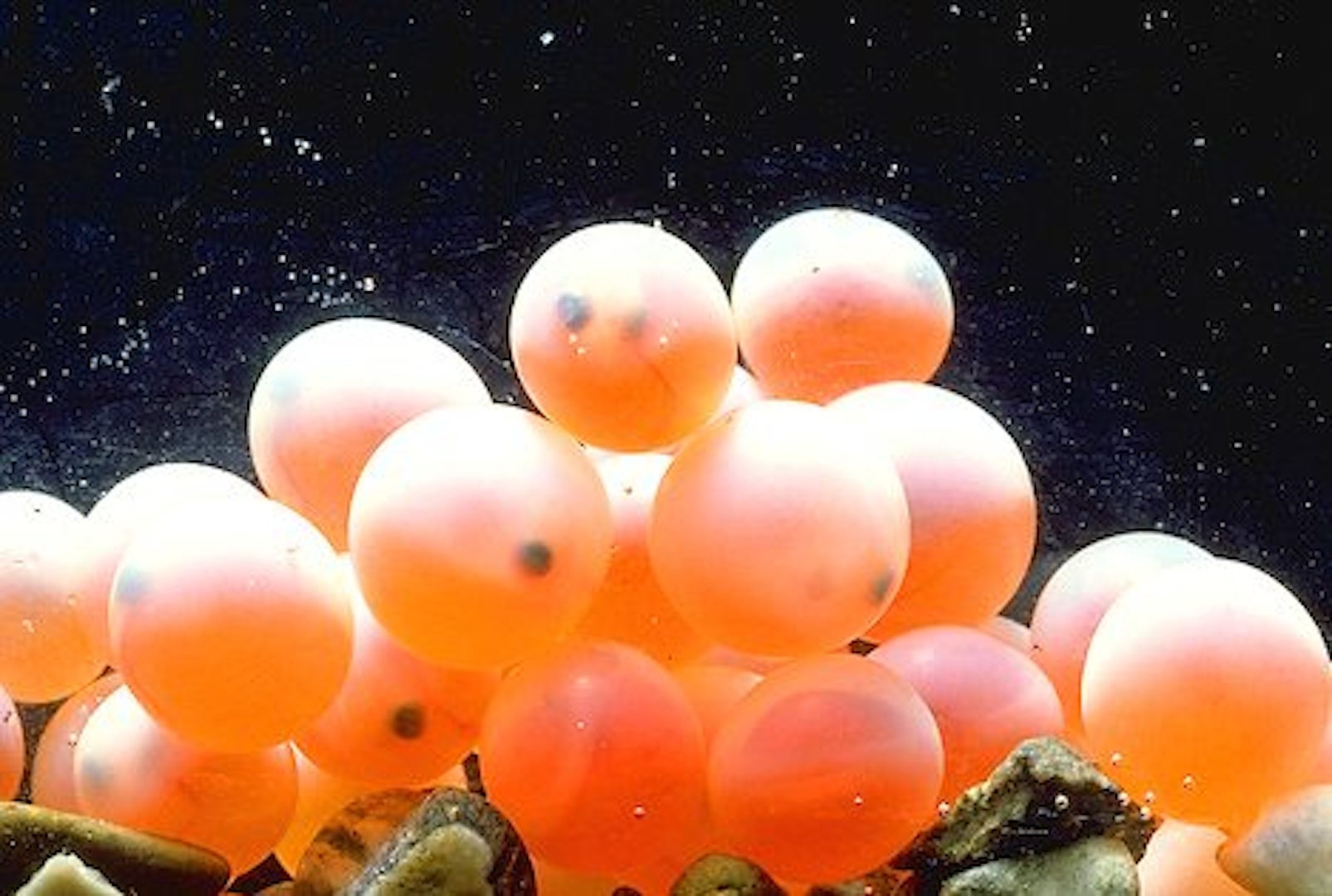
Game
The Salmon Game is an engagement activity followed by explanation and exploration activities using a simple browser-embedded computational model. It is designed using the 5E pedagogical model.
This lesson complements investigations in the NGSS performance expectations for ecosystems, human impacts and evolution. The primary focus of the lesson is the rate of successful reproduction in salmon populations. Click on the image to the right for complete lesson plan and materials.
The unit also provides connections to several of the science practices: engaging argument from evidence, constructing explanations, using mathematics and computational thinking, and analyzing and interpreting data.
This lesson covers the 7th grade standards to the right.
This lesson covers the 6th grade standards to the right.
Go through the salmon game scenario as a teacher-guided activity with the whole class. Click on the image to the right for the game slide show and student data sheets.
Repeat the salmon game scenario with changing values using the “Mother Coho” narrative. See narrative below and drag left and right on the numbers to see how changing the narrative affects the outcomes of these 2600 eggs.
Go to Discrepant events, Explanations and Arguments section for links to follow-up activities and student handouts.
Below is an interactive narrative that matches the game that students play in class. Change any of the numbers below by clicking and dragging left or right and the narrative will update the whole progression of the coho life cycle. Read the story –don't skim– it's not long, it goes fast, and it's supported by data. Play with the numbers and see what intuition you generate. This story outlines the foundation modeling excercise for the class. Take a look at the narrative below.
"In mid-November, a single female coho salmon lays 2600 eggs near the headwaters of the Middle Fork of the Smith River, and then she dies. With any luck, some of these eggs will become members of the next generation of coho salmon that will return to this stream to lay eggs of their own.
Place your at the head waters, in the egg section.
It turns out that about are never fertalized by male coho. Then become diseased with a common stream fungus. If that weren't enough, birds eat . Then a heavy winter rainstorm hits the watershed, causing flooding and muddy stream conditions that wash downstream where they're covered in tick mud, and they never have a chance to hatch.
Approximately 40 days after the eggs were fertalized, they begin to hatch. From the eggs emerge small fish called alevin. They have small yolk sacs attached to their bodies, which they'll feed on for several weeks. Alevin stay very close to the bottom of the stream or under the gravel. From the inital only survived to alevin stage.
Not all alevin emerge successfully and have deformed fins or other mutations that prevent them from surviving. Herons, ducks and kingfishers find alevin at the bottom of the stream and eat .
Six months have passed since the eggs were first laid. The alevin have absorbed all of the yolk sac and are now called fry. From the surving only survived to fry stage.
Move your to the fry habitat.
Fry swim faster without their yolk sacs, and they move away from the bottom of the stream and out to the edges of the stream, where herons, frogs and other fish eat . It is now the middle of the summer. The water temperatures are increasing as the stream level drops and are cought in shallow pools and do not survive the higher temperatures.
It's been a little less than a year since the surviving alevin became fry. The surviving fry are now a few inches long. They move downstream and take on a shiny, silver color. As they feed on insects, they reach 6 inches in length. They are now called smolts. The smolts are the first life stage that leaves freshwater and migrates out to the sea. They continue moving down the the river to the estuary. From the surviving only survived to smolt stage.
Move your to the smolt habitat.
are eaten by other fish, killer whales, sea lions and birds. From your surviving only survived to the adult stage.
Smolts move to the open ocean and grow to adult size. They join schools of coho from other rivers. They spend 1 to 3 years feeding in the ocean and grow to about 2 feet long and about 35 pounds.
Move your to the ocean habitat
A salmon fishing boat hooks several fish from a school of coho in the ocean. It turns out were from the spawn of your mother coho. Later on a pod of killer whales attacks another school of coho, and were from the spawn of your mother coho.
Of the that made it to the ocean, only survived to become spawning adults.
After 2 years in the ocean, those return to their native stream, and head back to their spawning grounds to lay their eggs. All coho salmon die after they spawn. The cycle begins again with a new batch of eggs."
Below is a computational simulation that matches the above simulation using the initial values. Click run to run the simlation.
This lesson follows a specific and consistent pedagogical design for asking questions, using models, generating explanations and creating arguments based on evidence. Click to the right for explanation and argumentation templates.
The pedagogical design is as follows:
The question: Every computational model is designed to answer a single specific question. If you're question changes, then your model must also change. To the right is the specific question that this model attempts to answer.
The assumptions: Every computational model is build upon specific assumptions that simplify the complexity of the real world so that we can answer our specific question. To the right are some of the assumptions implicit in our model.
The discrepant event: Every lesson built around a computational model has a discrepant event. This event is often a surprise, "aha!" or eureka moment, where the model user generates an insight into the question being asked. To the right is an example of the kind of discrepant event a student might experience during this lesson.
The explanation: Models are often used to help us explain why something happens in a way that matches our observations. In this case a students explanation attempts to answer "Why do salmon lay so many eggs?" To the right are a couple example explanations, both that a student might provide and that a teacher might provide.
The argument: An explanation is different from an argument. An explanation can start off as a hypothesis, or a tentative explanation, that relies on observations, data, and causal events to build towards a more confident, consensus-driven conclusion. An argument attempts to assert new knowledge (the claim) based on evidence. An argument is often prompted by a decision-making question that can lack the certainy of being "right" or "wrong". Arguments can usually be challenged from other viewpoints. To the right is an argument question that students could respond to using evidence from this simulation.
The argument claim: The argument claim is an assertion that responds to the argument question. To the right is an example claim."
The argument evidence: The argument evidence is a reference to data or observations that support the claim. To the right is an example of evidence that supports the example claim.
The argument reasoning: The argument reasoning is a statement that links the claim and the evidence in a way that attempts to affirm the link between to two. To the right is an example of reasoning statement that links the example claim to the example evidence.
The extension: While a computational model might help you answer a question, create an explanation or support an argument, a good computational model will often motivate more new questions or ideas. It's important to take advantage of the opportunity to extend the present investigation to new, different and interesting ideas. The extension invites students to think more creatively, broadly and/or deeply about the system they are exploring, with the goal of motivating future exploration, curiosity, discovery and excitement. Scientific inquiry can be a profound and exciting open-ended endeavor, and extensions allow students to explore their curiosity about the world.
Data supporting this coho life history was provided by the California Department of Fish and Wildlife, and is available here https://www.dfg.ca.gov/fish/Resources/Coho/SAL_CohoLifeHistory.asp
